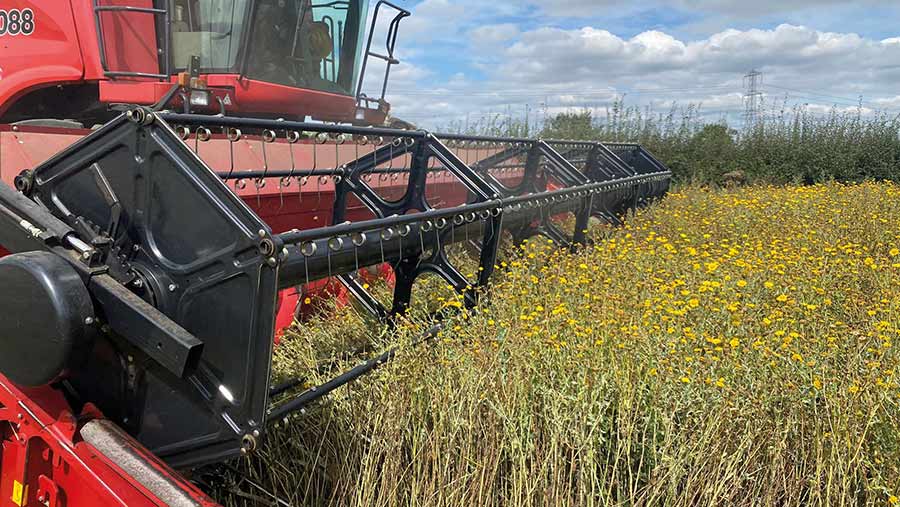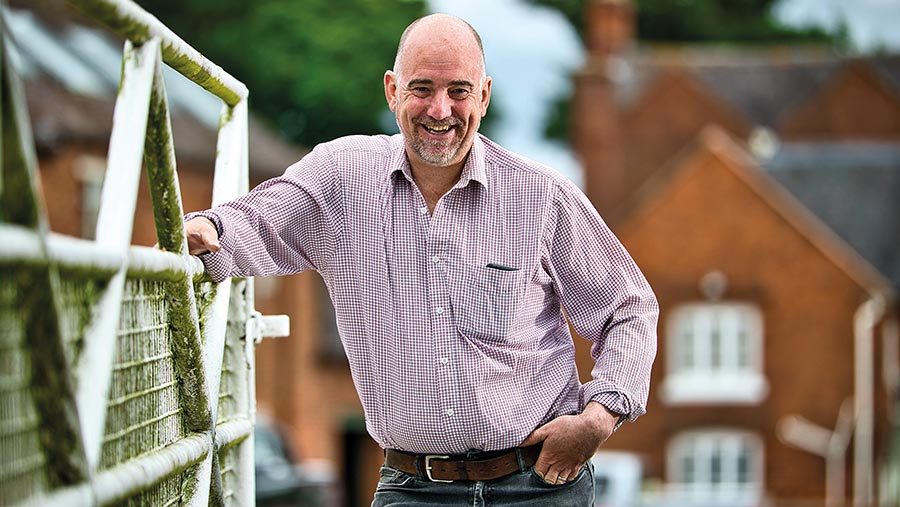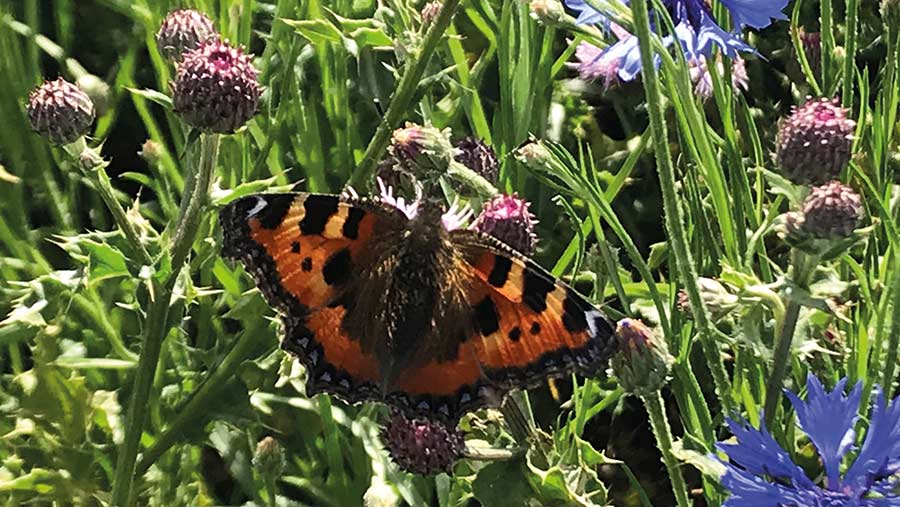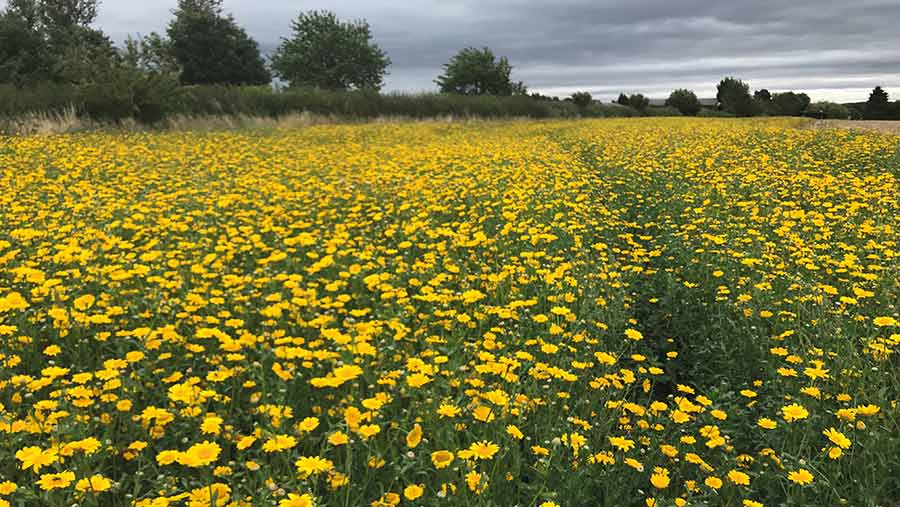Grower’s tips for introducing cornflower and marigold crops
 © Tim Parton
© Tim Parton Staffordshire farmer Tim Parton has grown the niche flower crops corn marigolds and cornflowers for the first time this spring.
Mr Parton found growing the crops, which are destined for the flower seed market in garden centres, a particularly enjoyable experience, despite having a challenging harvest and no prior knowledge of the flower sector.
Unable to compare the crop to anything he has grown or harvested before, he said the addition of new species to his rotation saw crops alive with bees and other pollinating insects.
See also: New slurry treatment fixes N from air to create enriched fertiliser
Establishment
Mr Parton drilled the crops on 30 April, and opted for a low seed rate of at 6kg/ha for the cornflowers and 5kg/ha for the marigolds as seeds were so small and fine.
Each crop was planted in an individual acre trial plot (0.4ha) located in an accessible field and close to the farmyard so he could keep a close eye on progress.
“As the plants are summer flowering, seeds require warm seed-bed temperatures. We drilled them with the John Deere 750 A slot drill, following a cover crop,” he says.
He continues that establishment was relatively straightforward, with no inputs required apart from the initial seed and fuel. “The marigolds were perfect with no weed issues at all, but the cornflowers proved more of a challenge due to the hot weather.”

Tim Parton © Richard Stanton
Harvest
Unlike cereals, which naturally senesce, these flowers continued to flower, which meant crops were cut green. Hitting on the right harvest timing, between waiting for new flowerheads to develop and losing existing seed was, therefore, a difficult decision.
Cutting such a tall crop, which reached nearly 1m in height, Mr Parton had to ensure not to overload the combine, cut too fast or thrash the crop too hard during harvest on 30 August.
As a result, marigold yields successfully achieved their target of 250kg/ha with about 10 flowers per plant. However, cornflowers proved more difficult.
Mr Parton suspects he lost nearly 80% of the cornflower yield as seeds were unknowingly expelled from the flowerhead.
“Having not grown the crop before, I was completely unaware that we were losing seeds during the build-up to harvest.
“The flowers undergo an opening and closing – where the heads open during the day and close at night – and during this process a significant proportion of seeds were lost.”
“When growing a new crop for the first time it is always a learning curve and I now know what to look out for next time,” he says.
Mr Parton is giving himself five years to get used to growing a new crop on the farm. He advises others to trial a new crop on a small area to see if it suits soil type and farming practices.
“A good tactic to use, is if after three years of the crop not performing to plan, consider growing an alternative.”
Overall, he says that growing the niche crops for the first time was a success and he is looking forward to growing the flowers again and improving on next year’s yield.
What are cornflowers and corn marigolds?

© Tim Parton
Cornflowers (Centaurea cyanus) are an annual flowering plant, with an intense blue colour arranged in flowerhead with grey-green branched stems. They are part of the Asteraceae family and show similar characteristics to sunflowers.
Also part of the Asteraceae family, corn marigolds (Glebionis segetum) are a herbaceous perennial plant with bright yellow flowers.
Mr Parton grew the flowers for seeds to be sold for Biodiversity projects through The Green Farm Collective in a very niche market, with only a handful of other growers in the UK supplying Your Green as the seed company. Your Green is working with Yourpact, which offers consultancy for Biodiversity projects for companies wanting to offset carbon or enhance their own land biome.

© Tim Parton

